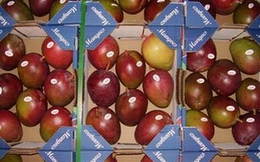 The South African mango season will most likely finish earlier than normal this season. Rudolf Badenhorst said volumes are also down on last year, this mainly due to the bi-annual nature of mangoes. "The climatic conditions during the growing season were not particularly good either, volumes this year will be down from last year's 65,000 tonnes to 50,000 tonnes. The season will come to a close at the end of March instead of April, but there may still be some fruit available into April."
The South African mango season will most likely finish earlier than normal this season. Rudolf Badenhorst said volumes are also down on last year, this mainly due to the bi-annual nature of mangoes. "The climatic conditions during the growing season were not particularly good either, volumes this year will be down from last year's 65,000 tonnes to 50,000 tonnes. The season will come to a close at the end of March instead of April, but there may still be some fruit available into April."The main growing region for mangoes is the Hoedspuirt area, where 50% of the volume is grown, the other producing regions are Levubu and Onderberg. The traditional varieties are the Tommy Atkins, Kent and Keitt's. Badenhorst explains that the Heidi variety is proving very popular on the South African market towards the end of the season and other new varieties are also being explored for the domestic and export trade.
Exports of South African mangoes are limited, the main competition in the EU coming from Peru. Badenhorst said that Peru can produce mangoes for the European market that outperforms the quality of the South African Fruit. For future exports South Africa are looking to the East, but the domestic market is also good said Badenhorst, "South Africans love mangoes, the processing market also counts for a big portion of our production, at around 75%. The mangoes are pickled, juiced and dried."
Despite the reduction in the acreage over the last few years, it is now stabilised at around 7,000 Ha.





